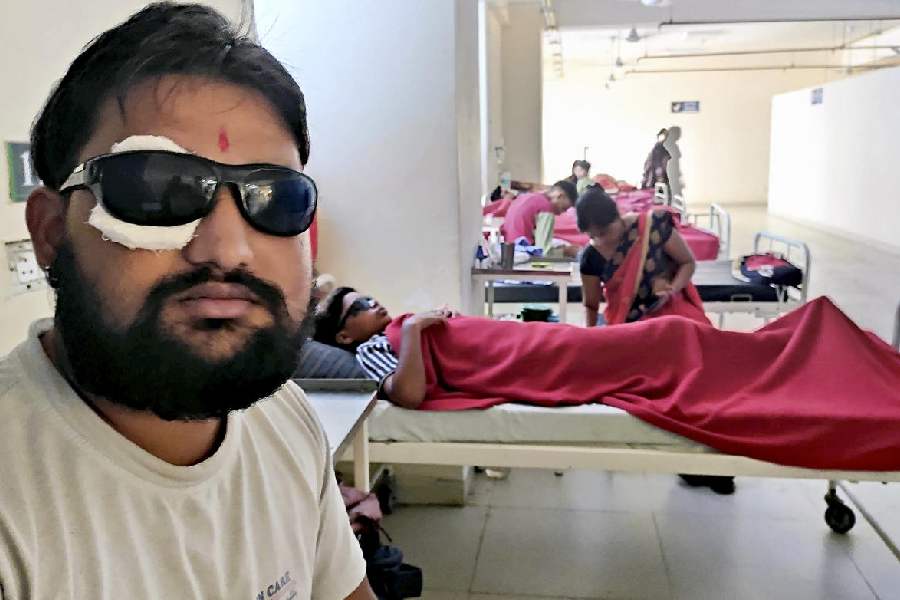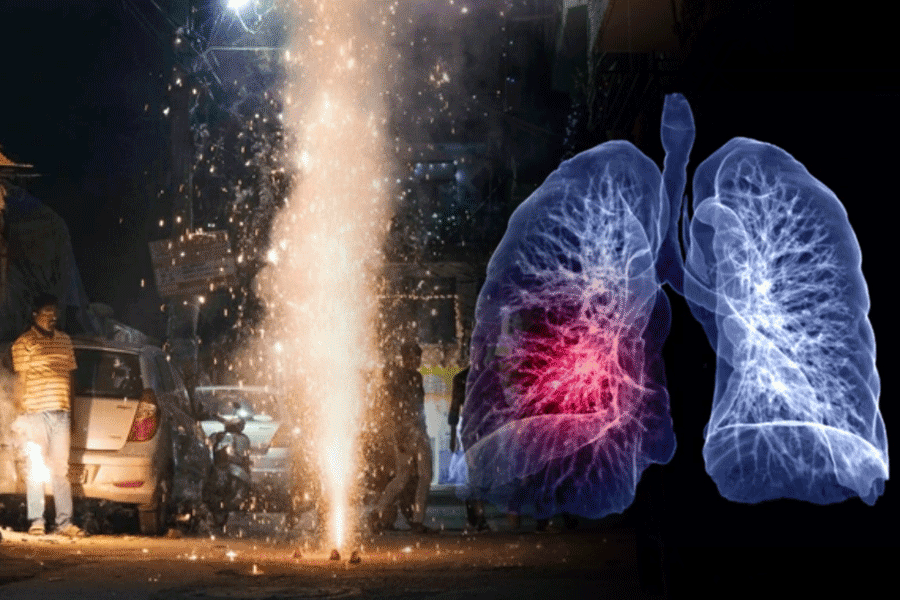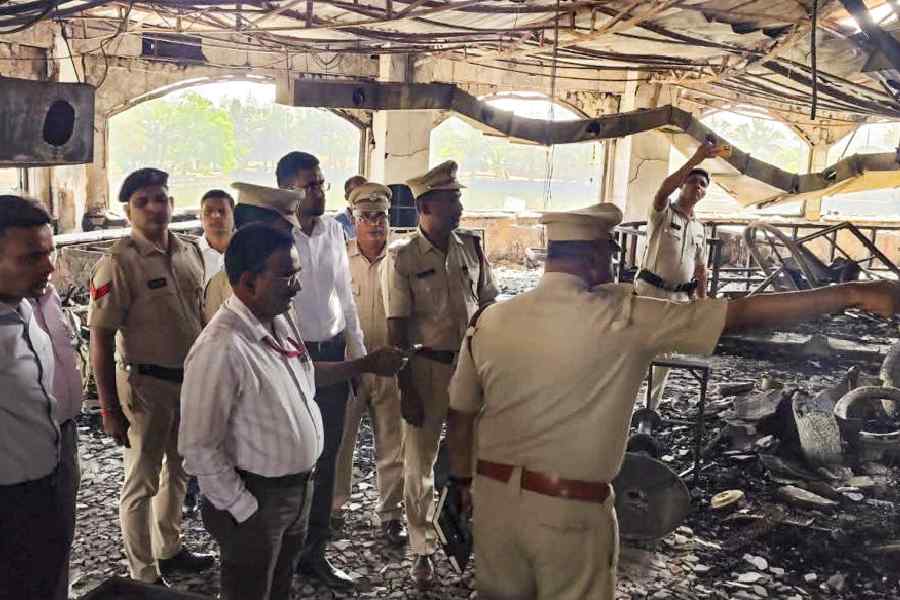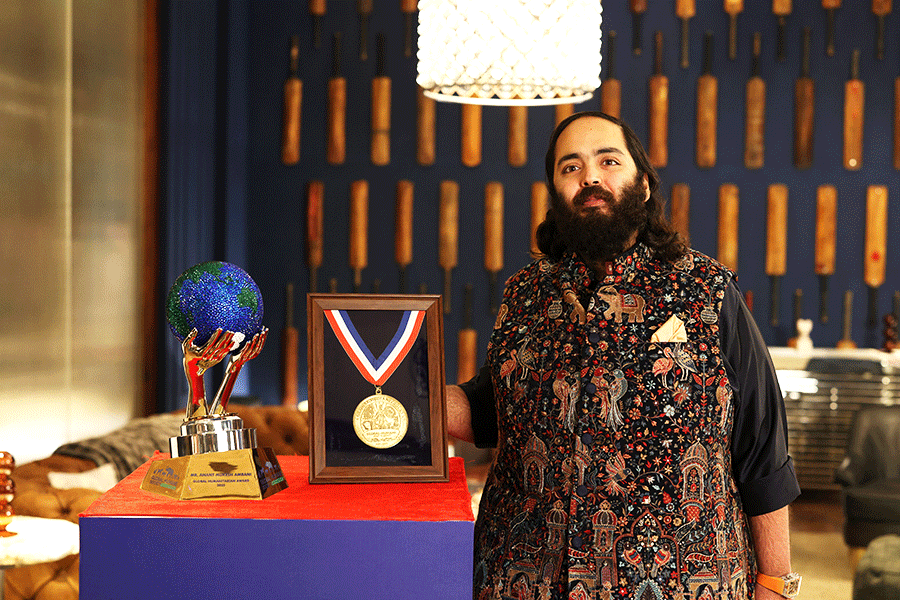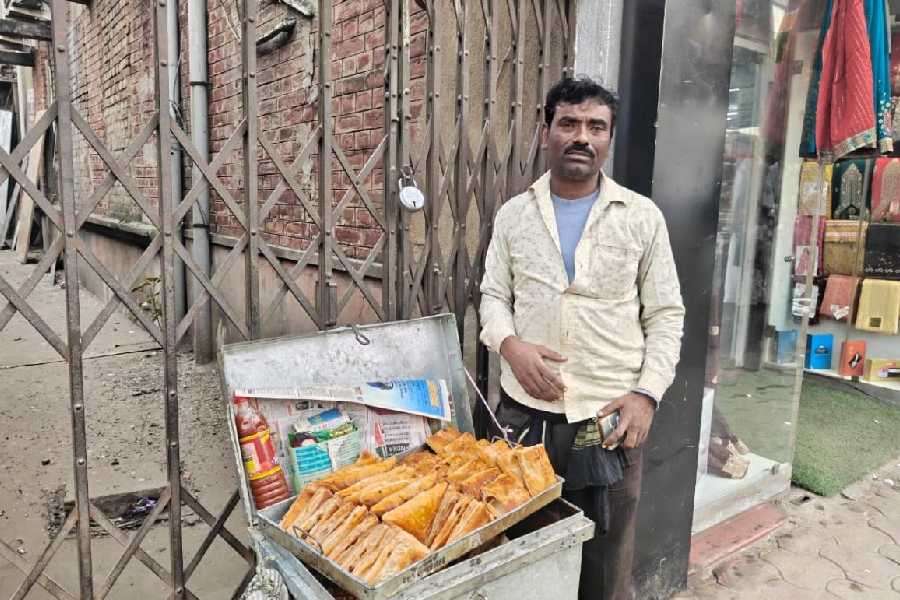A nationwide body of eye doctors on Friday sought an immediate ban on carbide guns and other improvised explosive firecrackers amid reports that more than 1,200 people in multiple states had suffered eye and facial injuries during Diwali this week.
Carbide guns should be viewed as “chemical bombs, not conventional firecrackers”, the All India Ophthalmological Society (AIOS) said. The statement urged authorities to disrupt the supply chain for calcium carbide and related materials.
AIOS executives — representing 28,000 members — said they had decided to issue an “urgent national appeal” to the Centre and state governments after preliminary reports from state branches indicated that injuries had risen more than tenfold this year over previous years.
“We’re still processing data, but it appears that at least 1,200 people, including children, have been injured and some have lost their eyes,” Santosh Honavar, AIOS secretary and an eye surgeon at the Centre for Sight in Hyderabad, told The Telegraph.
The ophthalmology community in India had earlier, too, expressed worry about injuries from carbide guns. “But what used to be isolated incidents — fewer than 100 across the country — has jumped sharply this year,” Honavar said.
Carbide guns, often used by villagers to scare away birds or monkeys that raid their crops, rely on a mixture of calcium carbide and water to produce acetylene gas, which drives the blasts.
Conventional small firecrackers can send fragments or hot debris up to about 15 feet, though larger or improvised devices can hurl material much farther.
“Standard firecrackers involve controlled explosions and contain wicks that allow people a few seconds to move to a safe distance,” Honavar said. “But calcium carbide devices cause uncontrolled explosions, often close to the face.”
Besides burns from the blast, a spray of high-speed carbide powder into the eyes can cause severe alkali injuries to the cornea that may lead to permanent blindness, he said.
Doctors in Bengaluru were the first to document a carbide gun eye injury in 2022 — a 44-year-old farmer was injured while trying to scare off birds. In 2023, doctors at the LV Prasad Eye Institute, Hyderabad, reported 23 cases of carbide injury between 2021 and 2022.
Health researchers say the low cost and easy availability of carbide guns have led many people to use them as substitutes for conventional firecrackers.
Tanwi Trushna, a physician at the National Institute for Environmental Health Research, Bhopal, and her colleagues in 2023 documented five patients with carbide gun eye injuries in Madhya Pradesh.
In those cases, the guns worked as expected a few times. Then, they malfunctioned, prompting the users to peep inside to look at the sparking, either through the barrel or by opening the carbide loading door at the rear end. The acetylene gas in the barrel ignited a blast, spraying the chemicals outward.
“We believe that social media messages promoting carbide guns as alternatives to conventional firecrackers have contributed to this year’s surge in injuries,” Honavar said.
The AIOS has urged authorities to launch public awareness campaigns, strengthen hospital emergency preparedness, and ban the manufacture and sale of carbide guns and related materials.
It has expressed concern that such devices continue to be used as people prepare for Chhath Puja and other upcoming festivities.
“The rise in such preventable, blinding injuries is alarming and unacceptable,” said Partha Biswas, AIOS president.

